Affectionate, curious, lively and playful, the Bengal cat is a feline that we completely fall for. It is also one of the favorite cat breeds of the French, after the Maine Coon and the Birman. If you have just adopted a Bengal, you are probably wondering what food to choose for your beautiful cat, how to feed it well. Look no further, we tell you everything in this article!
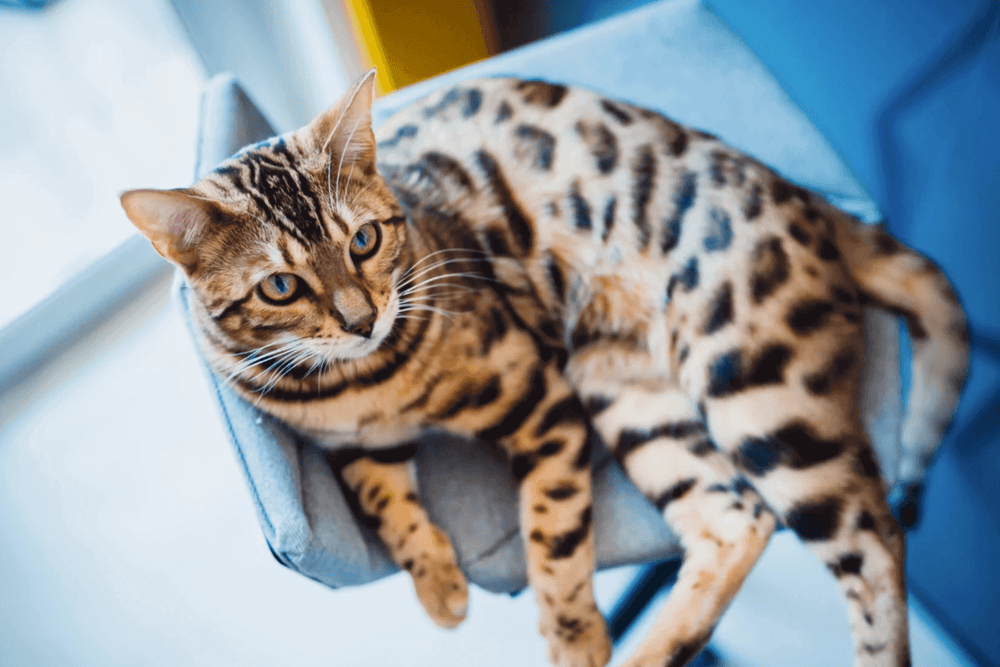
The Bengal, a unique cat
The Bengal is a breed of cat originating from the United States, born from a cross between a domestic cat and an Asian leopard cat, Prionailurus Bengalnsis. For the record, we owe this unique breed to the passionate geneticist and breeder Jean Sugden Mill who, in 1963, carried out the first cross between these two felines. And it was only twenty years later that the Bengal breed was registered by TICA (The International Cat Association), in 1983.
In France, it was only in 1997 that the breed was officially recognized by the LOOF (Official Book of Feline Origins). And since then, the Bengal cat has continued to conquer our hearts. As mentioned above, the Bengal ranks among the most popular cats in France, after the Maine Coon and the Birman , and before the Ragdoll .
It must be said that this feline has something to melt our hearts: it sports absolutely magnificent spotted or marbled fur, similar to its wild cousins, the leopard and the jaguar.
Beyond his beauty, his character also makes him an ideal companion. Although he looks like a real little panther, the Bengal is a very gentle, affectionate and above all very sociable cat, both with adults and children. He loves to be pampered, cuddled, and a little peculiarity: he is not afraid of water! “ My Bengal loves taking baths ,” confides Anaëlle, mother of the handsome Jasco (that's him in the photo 😻)
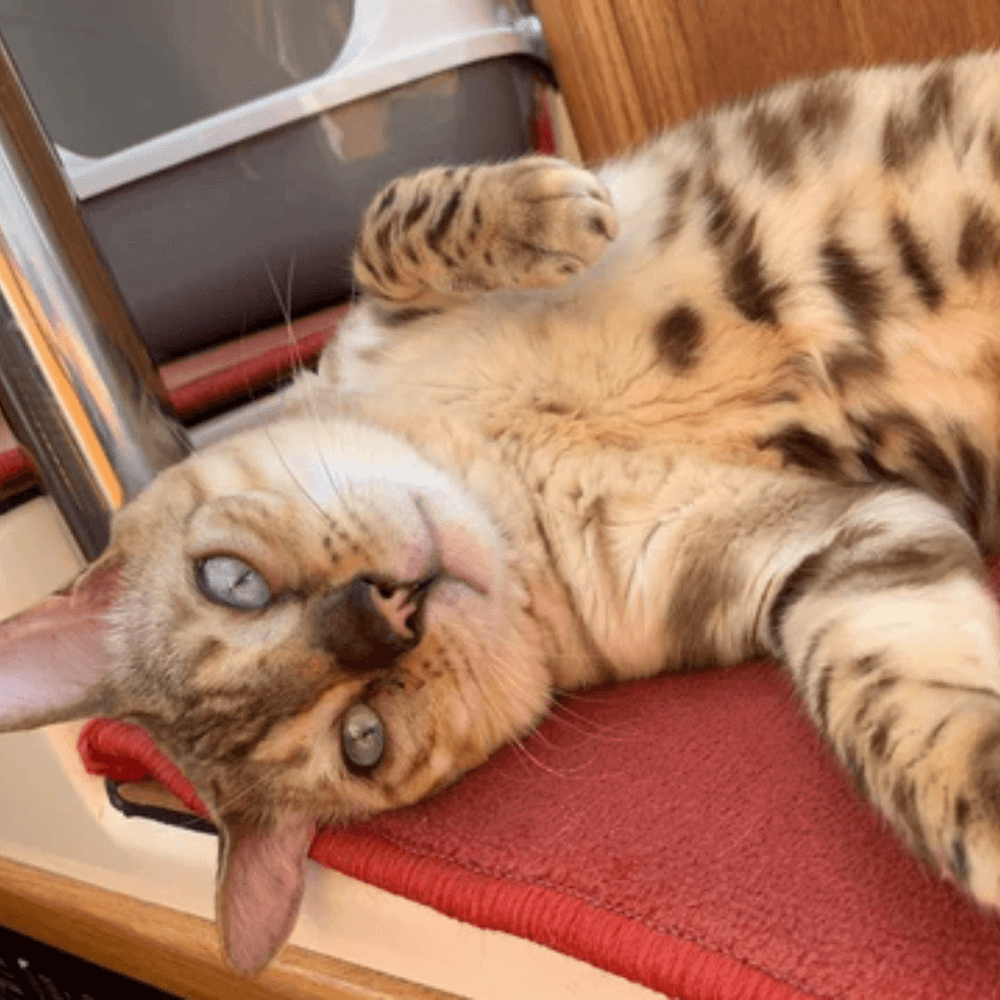
He is also a very talkative cat (he likes to communicate) and above all very playful. Just like the Maine Coon, he can sometimes behave like a real little dog. If you throw him a ball, there is a good chance that he will bring it back to you. And if you present him with a toy like a fishing rod, we also bet that he will play with it for hours.
“ The Bengal is also an athletic cat, very sporty, who likes to exert himself, climb trees. He is a great sprinter who can run long distances ,” adds Fabrice, a Bengal cat breeder in Libourne in Gironde, “Aux Robes de Velours”.
The Bengal cat is a marvel. If you have just adopted one, you will experience moments of intense happiness. But like many parents, you must ask yourself many questions about its diet. How to feed your Bengal cat properly? Should you give it a specific diet?
Because your health and well-being are our priority, we share all our best advice with you here.
Does the Bengal cat need a specific diet?
The Bengal cat is not really different from other cats. Their nutritional needs are exactly the same.
Like all other cats, it is a strict carnivore. That is, it cannot live and remain healthy without animal proteins in its diet.
These animal proteins are the source of the 11 essential amino acids for its health, namely taurine, arginine, phenylalanine, methionine, valine, leucine, isoleucine, lysine, tryptophan, threonine and histidine. Barbaric names, but essential!
All these micronutrients contribute to the proper functioning of his body (immunity, growth, digestion, reproduction) and its structure (bones, skin, muscles, hair). He also needs to find lipids (essential fatty acids), minerals, vitamins and a little fiber for his intestinal transit in his food.
Otherwise, your Bengal cat risks being deficient and developing very serious health problems such as central retinal degeneration, neurological disorders, and impaired immune function.
Here are the consequences of a deficient diet in cats:
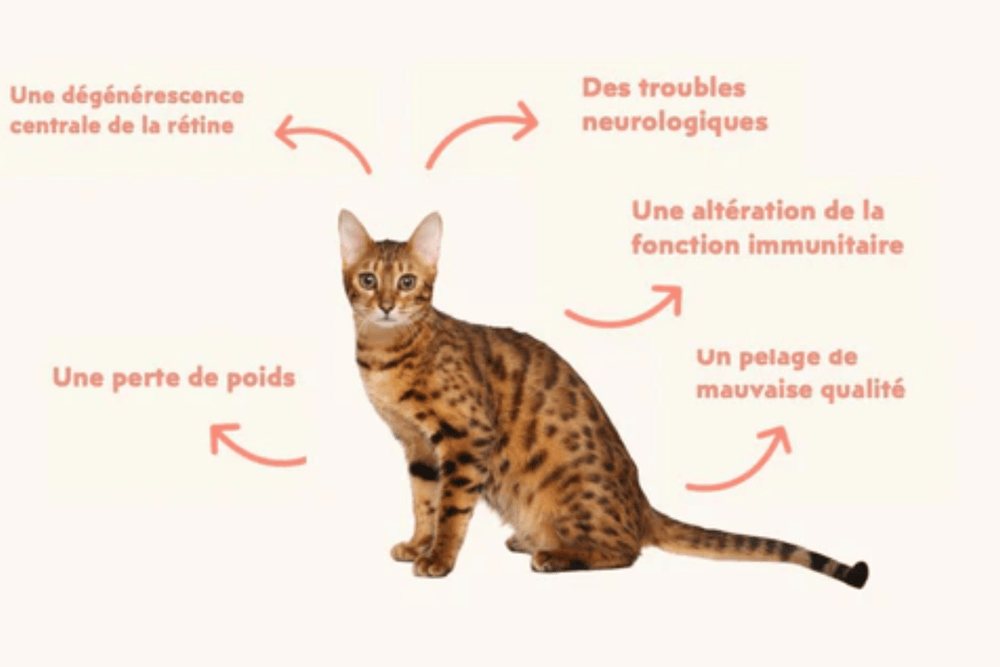
Bengal, Maine Coon , Birman ... Whatever their breed, our cats need to find animal proteins, lipids (essential fatty acids), minerals, vitamins and fibers in their diet!
The Bengal cat does not need a specific diet. However, there are two things to watch out for: the protein content in its food and starch.
What is the ideal diet for a Bengal cat?
Quality protein for boundless energy (and health)
Due to his fairly intense physical activity, your little companion has very high energy expenditure. He therefore needs food rich in animal proteins .
Be careful though: quantity does not always mean quality! On cans of pâté and on bags of cat kibble, some manufacturers display a very high protein content, but this content unfortunately hides a dark reality.
There are no noble offal or real pieces of muscle in the food, but reconstituted meat (mixture of animal and vegetable proteins), animal meal or mechanically separated meat (MSM).
VSM is a product “ obtained by the removal, using mechanical means, of meat, bones or carcasses of poultry. Obtained after boning, this product may contain bone, cartilage or marrow residues, unlike minced meat or meat for minced meat ”.
These proteins, used for economic reasons, have no nutritional interest for our cats. By ingesting poor quality proteins, the cat will not use them for its metabolism. The unassimilated amino acids will also be eliminated through urine. And the more your furry friend consumes these proteins, the more it will strain its kidneys. Which can develop chronic kidney disease in the long term.
How do you know if your protein is good quality?
As explained in our article on animal proteins in your cat's diet , the quality of proteins depends on their ability to provide essential amino acids. In feline nutrition, it is the protein/phosphorus ratio of the food that allows you to know a little more about the quality of the proteins used during the manufacture of the product.
High-quality protein sources, or those with high biological value (percentage of protein retained by the body), such as fish, meat, eggs and organ meats, have very high ratios (above 35). Conversely, low-quality protein sources (or those with low biological value), such as cereals, carcasses and bones, have low protein/phosphorus ratios (below 25). To determine this, simply divide the protein rate by the phosphorus rate.
Granted, it is not always easy to identify this ratio, especially since the phosphorus rate is not always mentioned. To help you, you can then check the ash rate (percentage of minerals present). Like urea, phosphorus is eliminated by the kidneys. The higher the amount, the harder these organs have to work to eliminate it.
It should be noted, however, that a diet that is too high in protein can lead to deficiencies in other nutrients that are not present enough.
At Ziggy, we have chosen to ban all these bad proteins from our cat food . You will not find any MSM, animal meal or reconstituted meat. We only use muscle and noble offal as animal proteins. Quality proteins! Our food is rich and balanced in protein (56%). As for our salmon kibble, it contains 44% good proteins.
A diet rich in protein, but not too high in calories
Even though he is less prone to obesity than other cats, the Bengal should not have a diet that is too high in calories , especially if he is sterilized or castrated. Like his peers, his energy needs are reduced by 20% on average after sterilization or castration. However, he still remains a big foodie. You must therefore ensure that he is given a low-calorie food that provides him with the necessary proteins.
An indicator that can help you is the protein-calorie ratio (PCR). This is mentioned on the boxes and sachets. It is the protein concentration of a food compared to the calories it provides. It allows you to know the actual quantity of protein ingested. A food for a sterilized cat, whether it is a Bengal or not, must have a higher PCR, ideally greater than 100.
Do not hesitate to consult our article on feeding sterilized cats .
Little or no starch for his digestive system
Like the Sphynx cat , the Bengal cat tends to have poor digestion of starch , which is found in grains, tubers and legumes.
It should be noted that the Bengal is a recently domesticated cat. Bengal cats that are called “domesticated” belong at least to the 4th and 5th generation. “ Still very close to the wild type cat, it has thus kept a sort of imprint in its stomach.” Its food must contain very little, if any, starch.
Also be careful here: grain-free does not mean starch-free!
In recent years, we have seen more and more cat kibbles bearing the label “grain free”. These foods may be grain free, but they still contain starch. This is essential for making kibbles: this carbohydrate gives them that airy and crunchy texture.
To replace cereals, manufacturers then use other sources of starch such as potatoes, sweet potatoes, tapioca or chickpea flour.
Let's be clear that starch is not just a problem for Bengal cats. It is also a problem for almost all other cats. Starch is nothing more than a carbohydrate , and carbohydrates are not an essential nutrient for cats. They do not need to be present in the diet of our whiskered ones since they are able to synthesize glucose from amino acids. These are released by animal proteins once digested in their digestive tract.
In “grain-free” foods, you need to watch the carbohydrate content . Some products can contain up to 50% carbohydrates, which can be harmful to our cats. In particular, it has been suggested that foods high in carbohydrates could increase the demand for insulin secretion, and thus predispose to the development of diabetes mellitus .
At Ziggy, our kibbles contain potato starch, but we favor gentle cooking to preserve a low glycemic index (GI). Our kibbles contain between 18% and 25% carbohydrates, maximum.
As for our pâtés, they contain less than 2% carbohydrates. We have chosen to exclude cereals, starches and legumes. No starch, no problem!
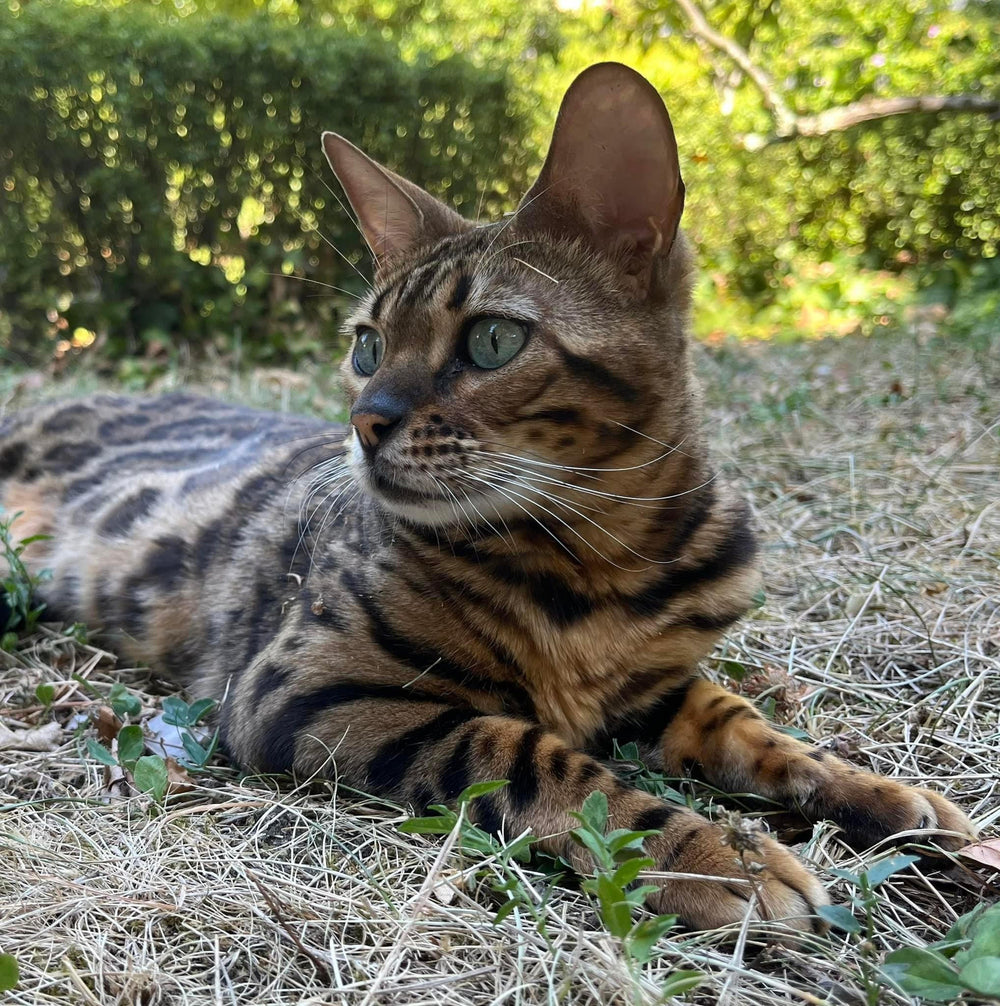
Pate instead of kibble
For your Bengal cat, we can only advise you to offer him wet food.
There are many benefits to feeding your Bengal (and all other cats) with pâté :
- It does not contain starch (in the case of Ziggy pâtés 😺). Essential for the manufacture of kibble, starch is not necessary for the preparation of pâtés.
- It is on average 4 times less caloric than kibble. The pâté is very rich in water and thus prevents the risks of urinary disorders. Note that the Bengal is predisposed to myocardial hypertrophy. And this hypertrophy can in particular be triggered by chronic kidney disease. When the kidneys “tire”, so does the heart! A wet diet will thus prevent these common risks in our little balls of fur.
- Thanks to its high moisture content, pâté also adds volume to your cat's stomach. It will be much fuller than with kibble.
- The nutrients present in the pâtés (again - quality) allow your cat to keep a beautiful coat. Which is not insignificant to maintain the soft and silky coat of your Bengal!
Of course, you can give him kibble, but this part of “dry food” must remain a minority in his diet. You can give him a 100% wet bowl or a mixed bowl (kibble and pâtés).
Since the Bengal cat is very playful, we also advise you to offer him a small amount of kibble in a toy. He will thus be able to exercise and use his hunting instincts, which are still very present.
What food for a Bengal kitten?
If your Bengal is still a kitten, he will need a diet adapted to kittens to be healthy and become a beautiful panther. His food must cover all his nutritional needs: quality animal proteins, lipids (essential fatty acids), minerals and vitamins. Just like their elders!
However, your growing Bengal kitten will need a little more calories and fat in his diet. And most importantly, he will need higher amounts of minerals, especially calcium and phosphorus.
As in all kittens, calcium deficiency can lead to bone demineralization, causing fractures and hypocalcemia (compulsive licking of extremities, digestive disorders, epilepsy).
A phosphorus deficiency can cause bowed legs (poor skeletal growth), very low endurance, poor coat quality. In short, everything you don't want for your beloved feline.
For your little Bengal, choose a special kitten food until it is old enough to enjoy adult cat food. For this, do not hesitate to ask your veterinarian for advice.
When asked "kibble or pâté?", we recommend both so that your baby cat can taste different textures. However, kibble should not be its main food. As mentioned above, dry food should be a minority, because it will not sufficiently cover its water needs.


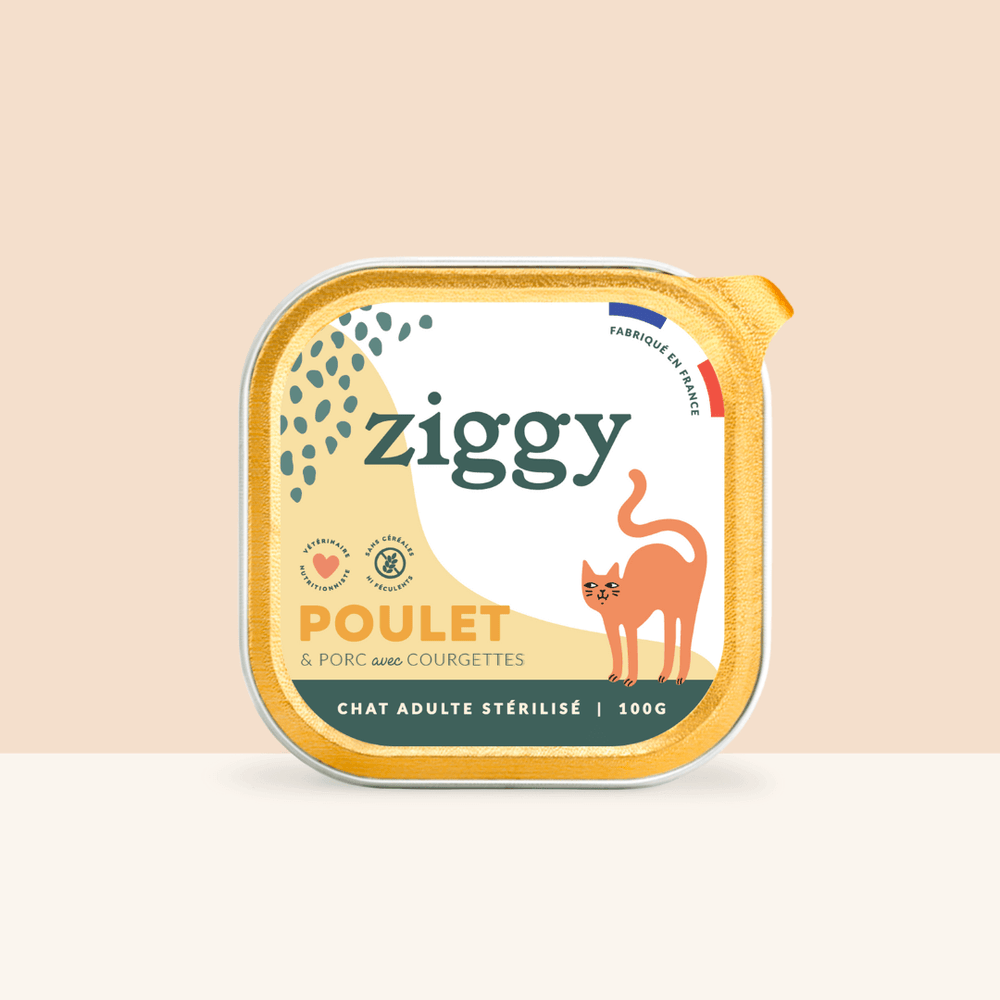
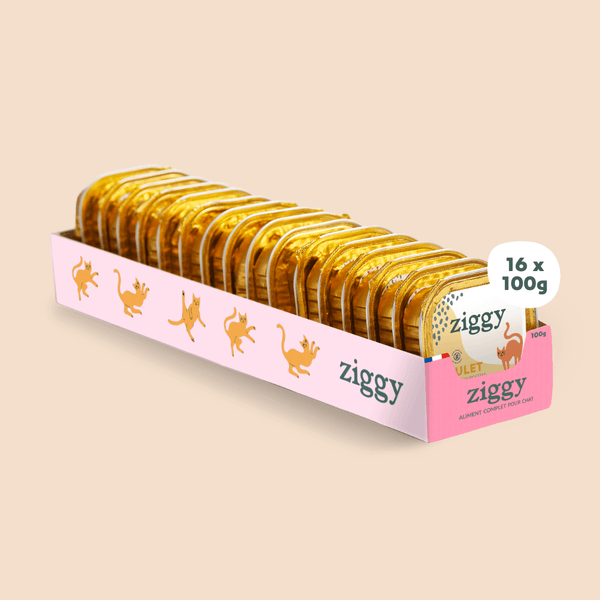


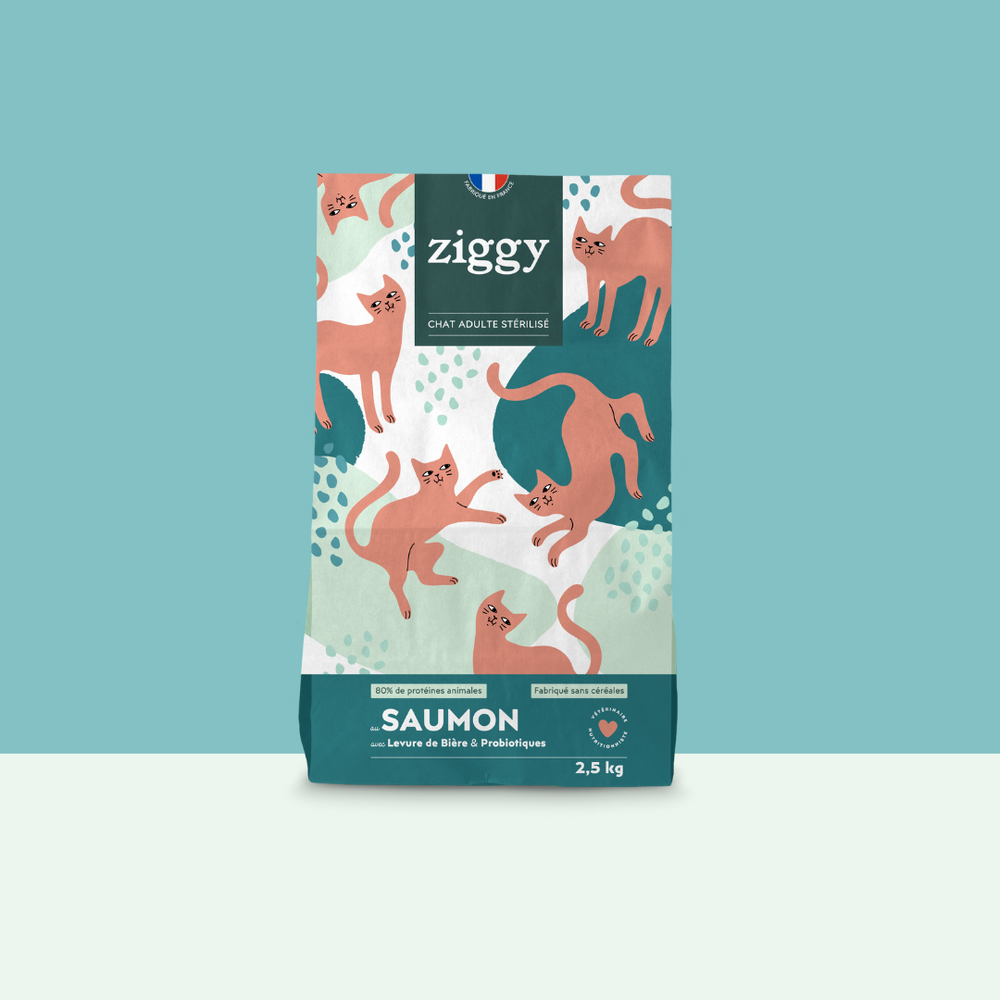
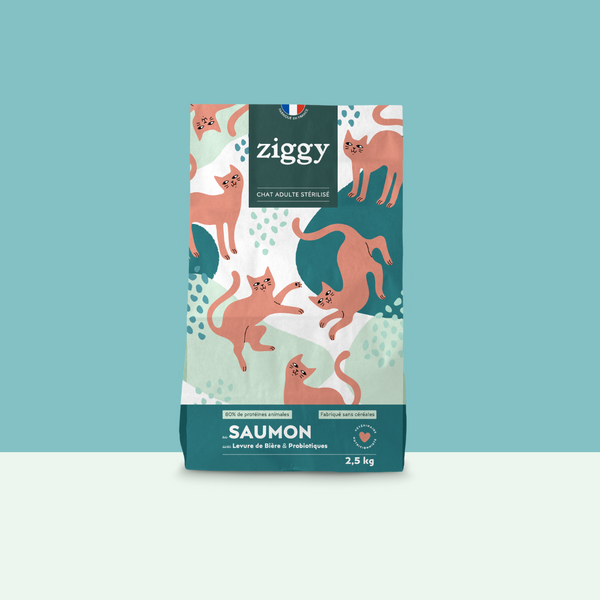


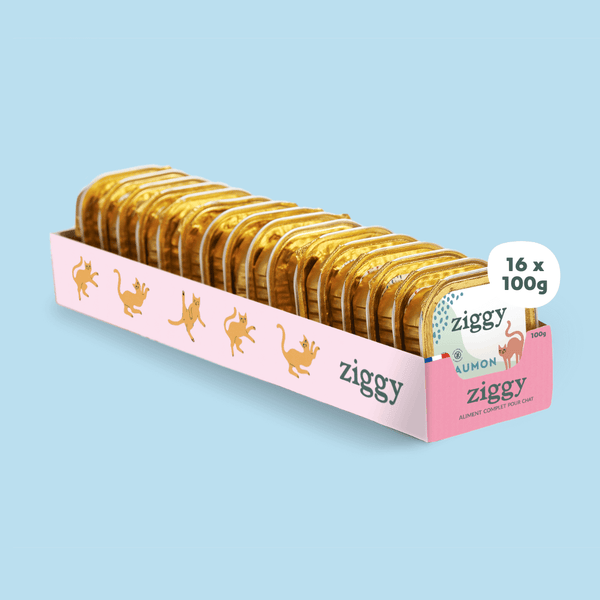



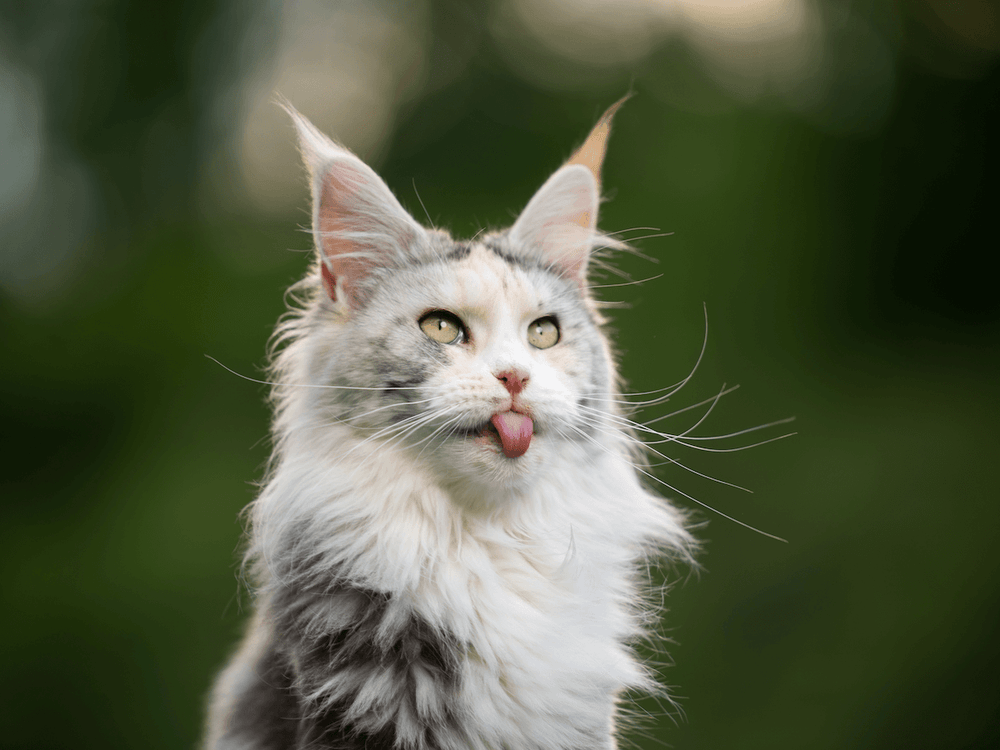
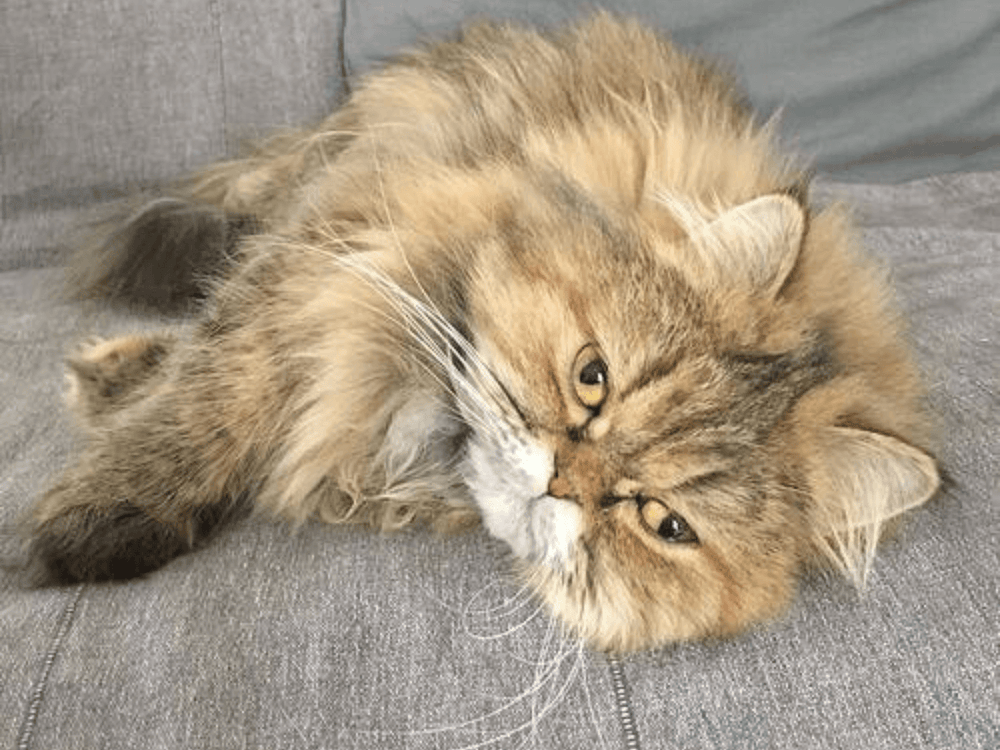
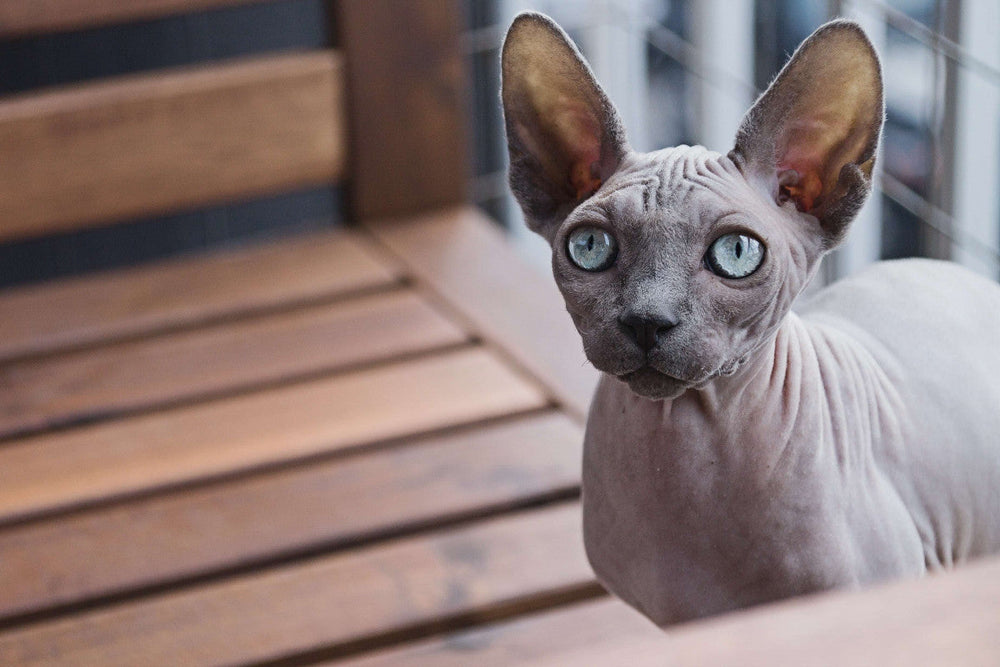
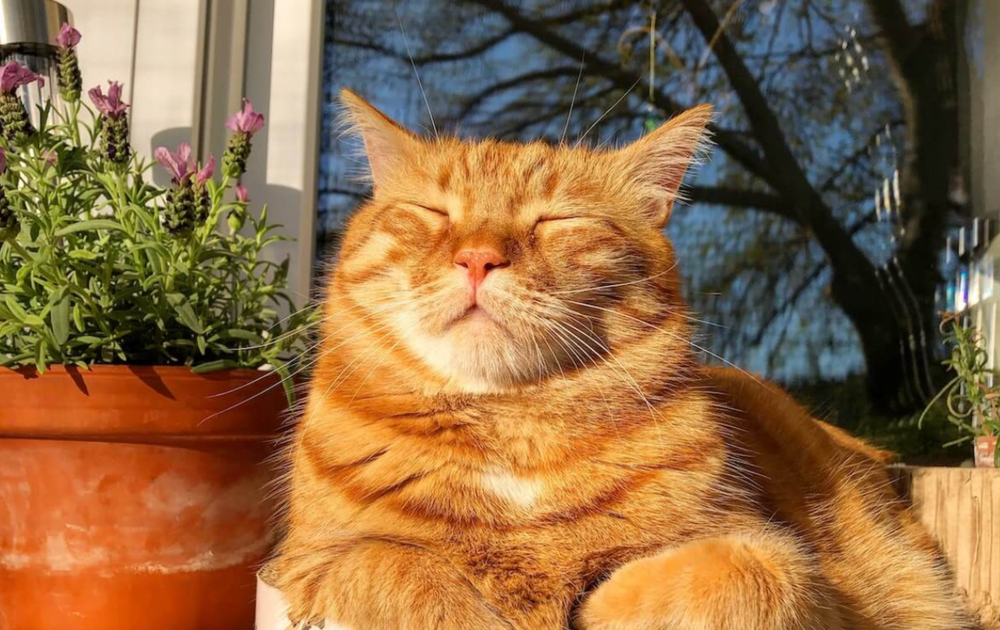
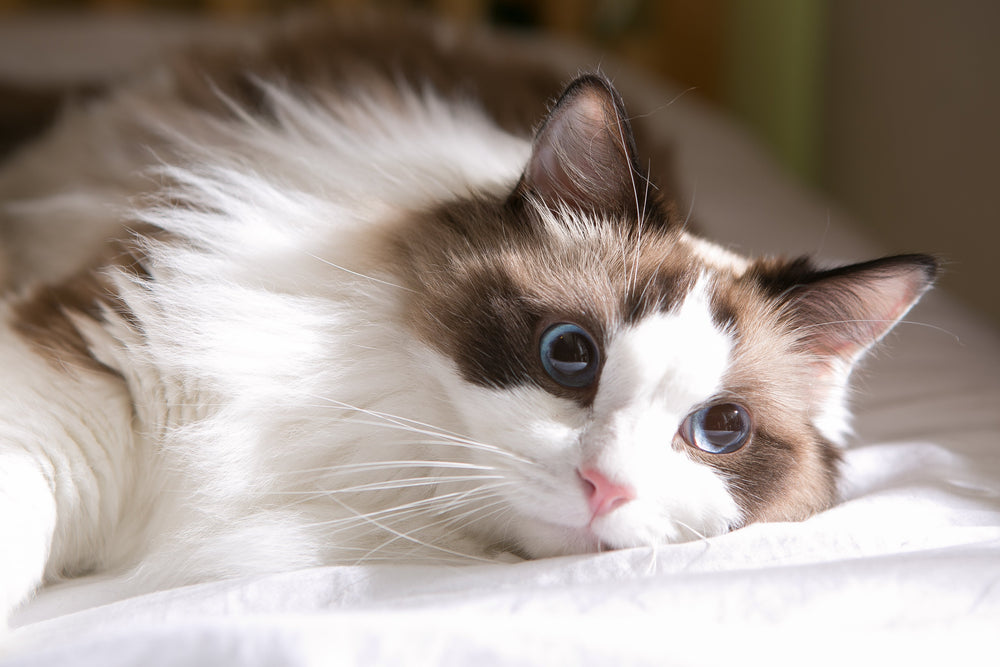
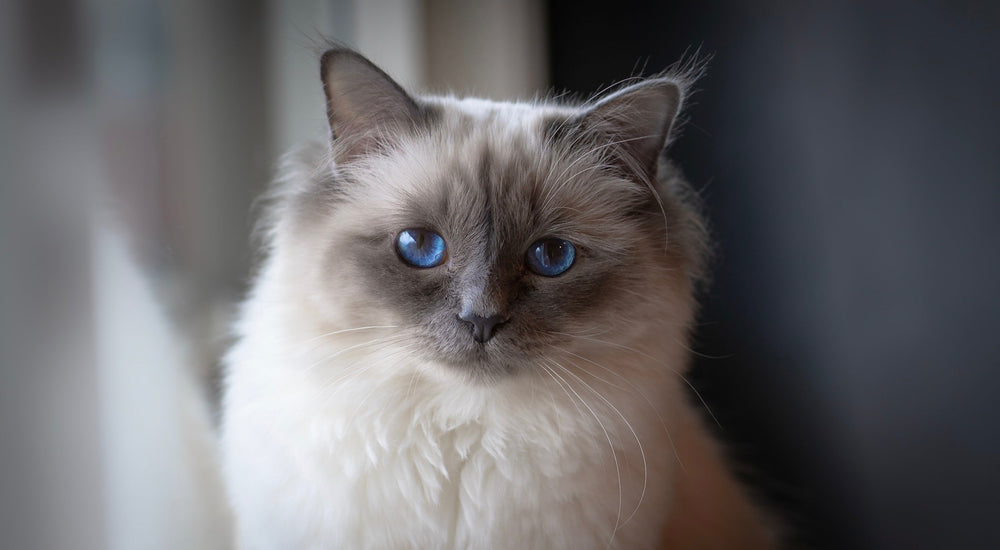
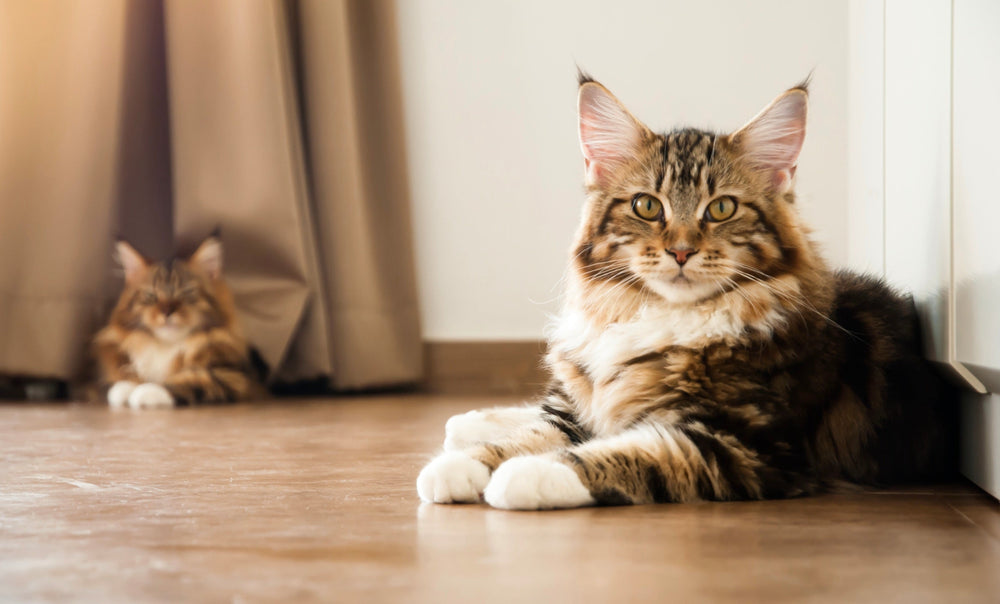
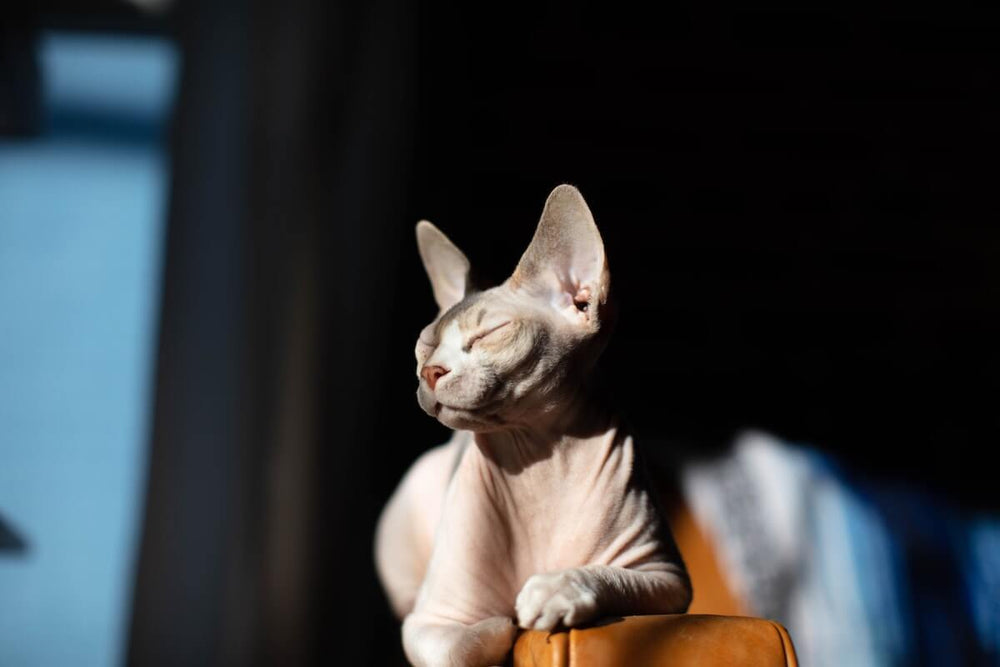
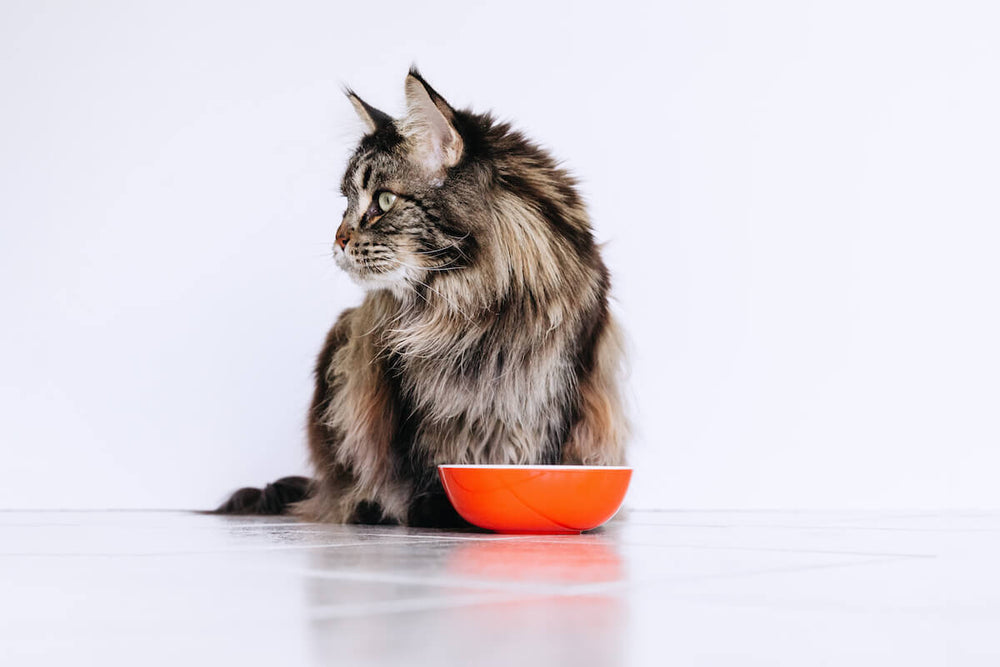
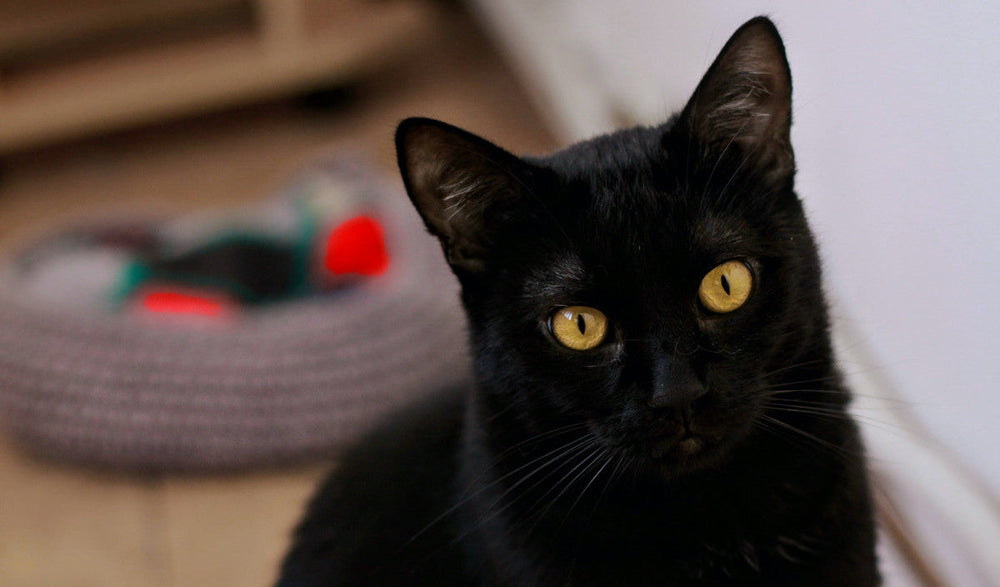
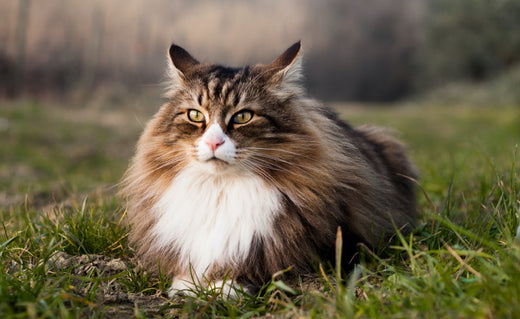
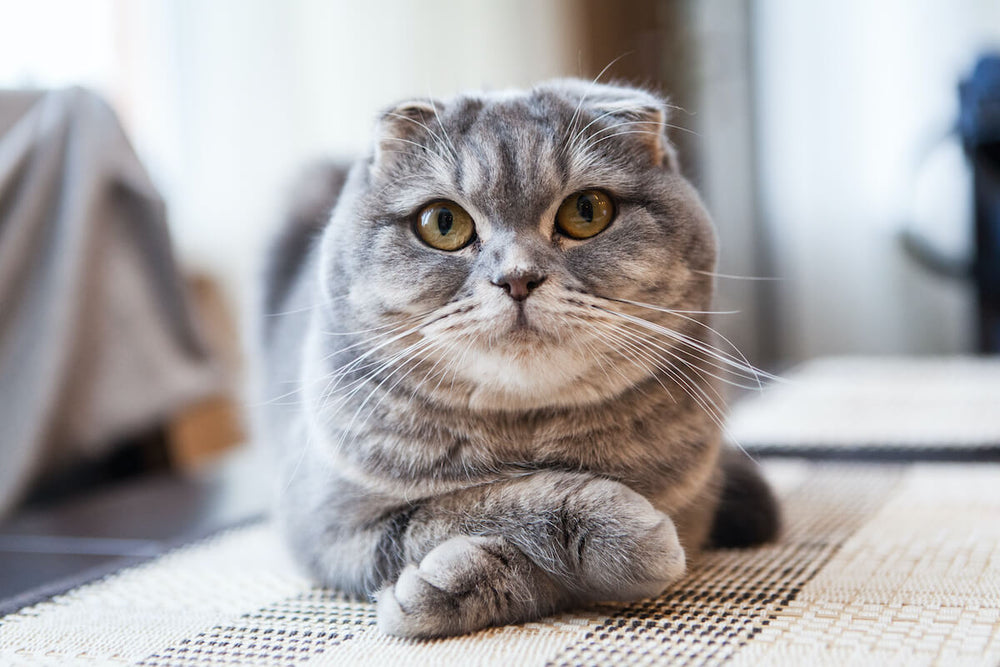
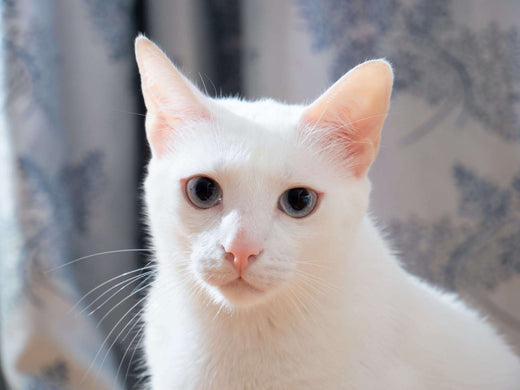
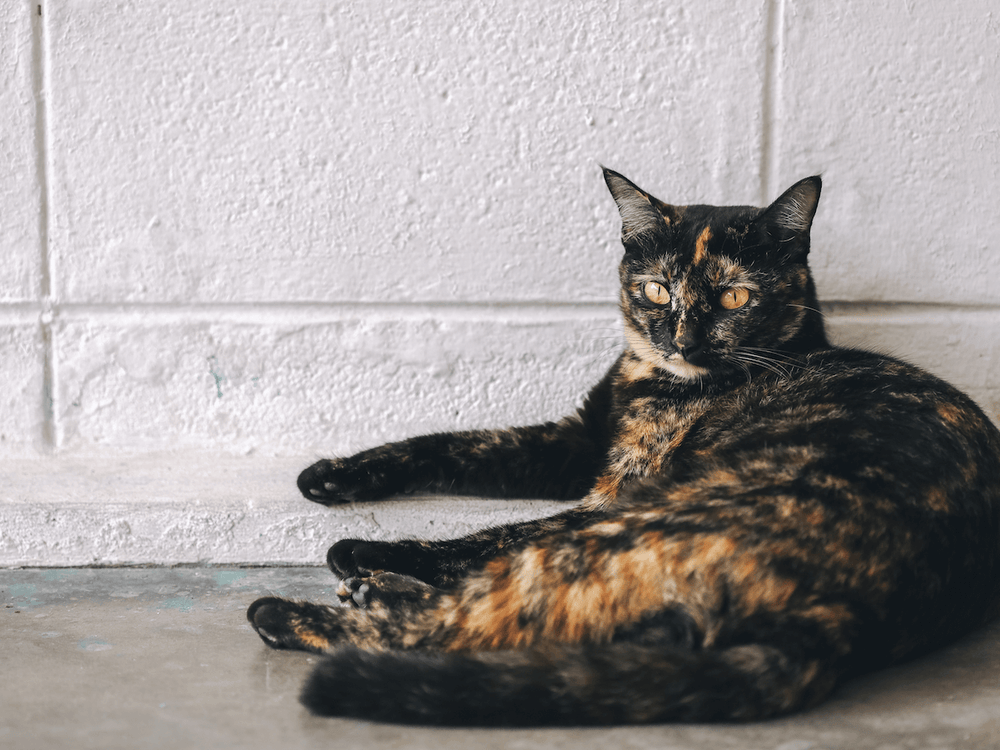
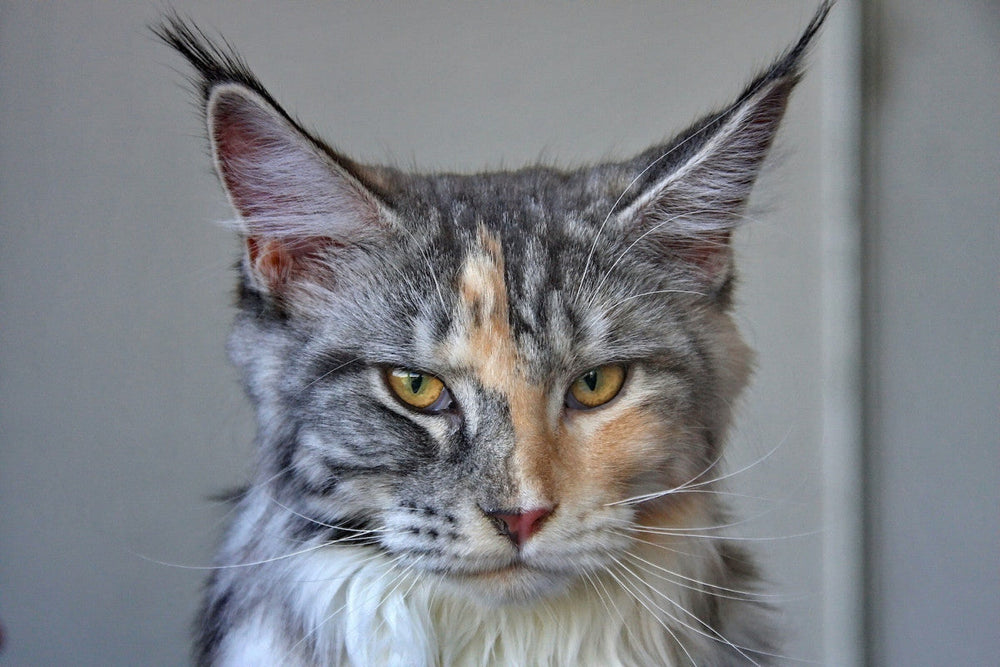
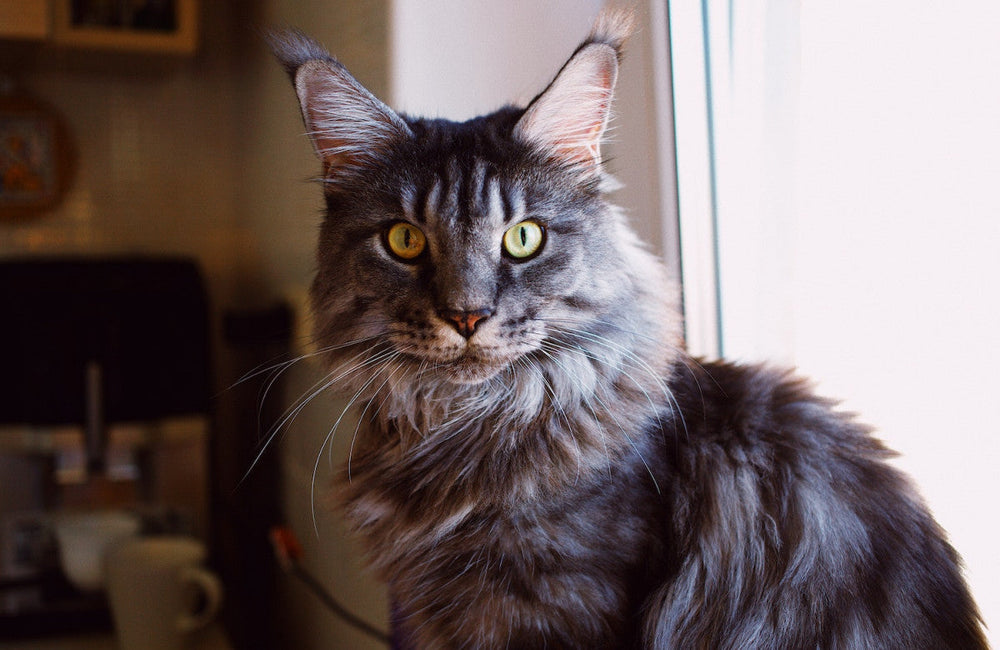


Bonjour Édith,
Merci pour votre commentaire. 💛
Pour votre chat Bengal, n’hésitez pas à demander conseil auprès de votre vétérinaire. Il est le mieux placé pour vous conseiller, d’autant si votre moustachu a de la diarrhée. Les troubles digestifs peuvent avoir une autre cause, non liés à l’alimentation.
On vous conseille toutefois de ne pas donner de la nourriture pour chien à votre chat. Nos félins ont des besoins nutritionnels bien particuliers. Une nourriture pour chien pourrait causer des carences chez votre chat.
On espère que tout ira bien pour votre petit tigre de salon.
Prenez soin de vous et de votre moustachu.
L’équipe Ziggy
bonjour nous venons d avoir un chat du bengal l ancien propriétaire lui donnait des croquettes hippohalergeniques de chez le vétérinaire il a toujours faim ne grossit pas et fait que de la dhiarrée que nous conseillez vous nous donnons à nos petites chiennes trufes dorées elles sont pas malades et ont de belles scelles sont elles recommandés pour le chat du bengal
Bonjour Brigitte,
Merci pour votre commentaire. 💛
Votre petite Bengal a un palais très exigeant, comme de nombreux chats de la Ziggy Family 😺
Pour Bahia, l’idéal est de privilégier une alimentation sans amidon car les Bengals ont tendance à mal digérer ce glucide. Si elle apprécie le poisson, n’hésitez pas à lui faire goûter nos pâtées au poisson blanc et au saumon. Très appétentes, elles ont les faveurs de nombreux chats, même les plus difficiles 😽 Nos croquettes au saumon sont aussi les préférées de nos moustachus.
Si vous souhaitez un accompagnement personnalisé, n’hésitez pas à nous contacter à hello@ziggyfamily.com 🌈
Plein de caresses à Bahia,
L’équipe Ziggy
Bonsoir
Ma Bengale a 16. Mois
Elle n aime que le thon avec coques. Crevettes alvins différentes composant .
Je dois varier au bout d un moment elle n en veux plus
Un peu de jambon cru
Refuse la viande poulet
Croquettes toujours avec du poisson
J ai acheté croquettes spécial Bengale elle ne les mange pas
Voilà mon casse tête
Elle n aime pas les sauces et le pâté même si c est du poisson
Brigitte et Bahia
Bonjour,
Pour connaître la quantité à donner à votre petite Bengal, n’hésitez pas à utiliser notre calculateur de ration qui se trouve juste ici : https://ziggyfamily.com/pages/calculateur-de-ration-lg 💛
Comme expliqué dans notre article, les Bengal ont du mal à digérer l’amidon. Le mieux est d’offrir à votre petite boule de poils une alimentation pauvre en amidon, ce qui est le cas de nos pâtées : nous avons choisi d’exclure les céréales, les féculents et les légumineuses. Pas d’amidon, pas de problème !
Si vous avez d’autres questions, n’hésitez pas. On envoie plein de ronrons avec votre petite Bengal 😻
Je voudrais savoir ce que ma Bengale snow . Née le 21 mai 2021. Elle pèse 3kg500. Je l ai eut elle faisait même pas 1 kg…….. je voudrais savoir la quantité et quoi exactement. ??? Svp
Leave a comment